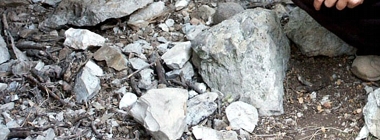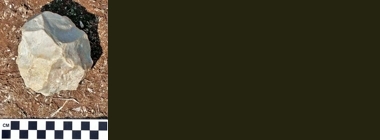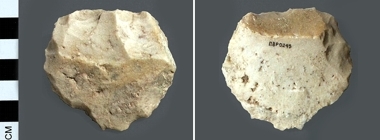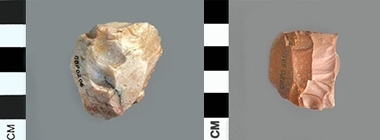The Economy of Debitage
By far the commonest artifacts in the scatter are cores and unmodified flakes. Levallois and discoid cores as well as Levallois products (and a few tools) show that Vrahos silex was exploited in the Middle Palaeolithic, while prismatic cores show exploitation in later periods of prehistory, especially the Neolithic and the Early Bronze Age.
One of the largest artifacts we have found is a prismatic core that weighs 1.3 kg (Fig. 11). Another is a discoid core almost as large (Fig. 12). Debitage frequently began from such sizeable cores, for the scatter includes many tools made on large flakes (c. 10 cm long) as well as sizeable flakes from the initial stages of core preparation (Fig. 13).
However, most of the cores left at the site are smaller than these large pieces by a factor of ten. Some were reduced to their present size as several rounds of flakes were removed from them. Others began as small chunks of silex. We cannot, however, usually tell which was the case (Figures 14 and 15).




